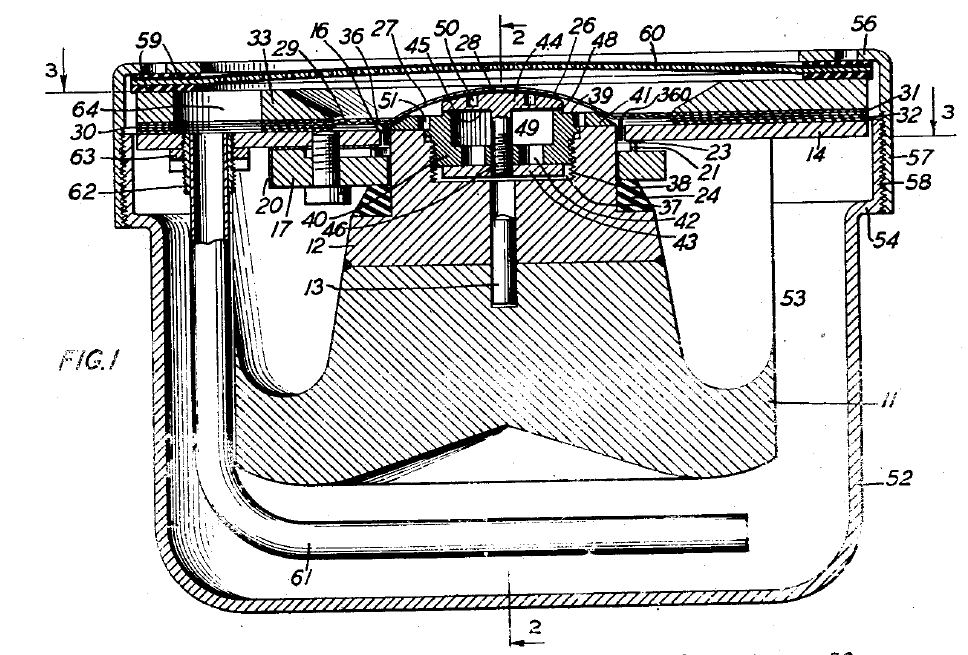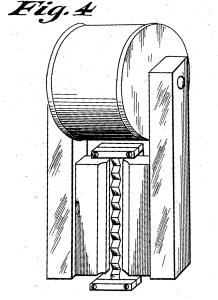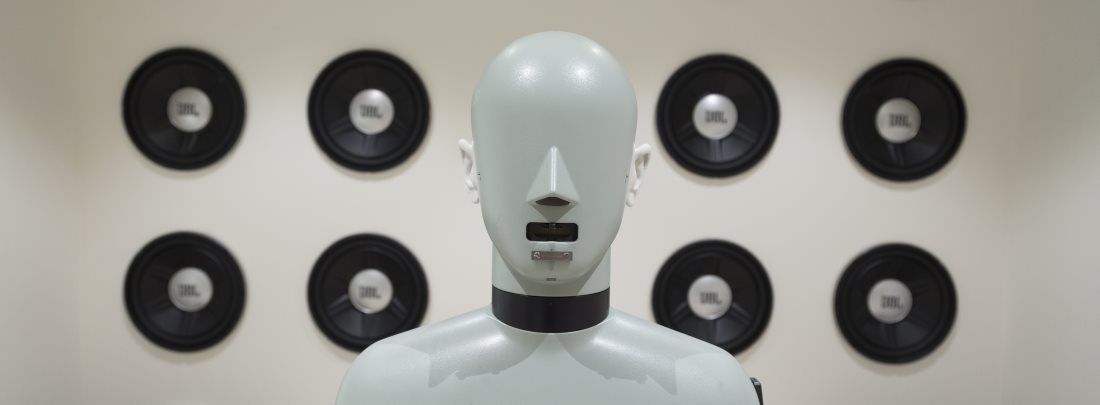In the preceding parts, I have mentioned several microphone (transmitters, in telephone lingo) types that were used in early telephone experiments. The first type, the one described by Borseul, was a make-and-break type transmitter, which was used by Reis. This type of transmitter is not very useful, and can hardly transmit understandable speech. The very closely related loose-contact transmitter, is the basis for the carbon microphone. Also related is the variable resistance transmitter used by Elisha Gray in his bid for the telephone. A needle was attached to the transmitter diaphragm, and the other end of the needle touched the surface of a conductive liquid in a conductive cup. When the diaphragm vibrated, the needle made more or less area in contact with the liquid, and the resistance of the circuit varied.
The loose-contact transmitter is based on the fact that the resistance of a loose contact varies with the pressure between the contact surfaces. This principle was also developed simultaneously by several inventors, with the inevitable legal battle. In 1877, both Emile Berliner and Thomas A. Edison applied for patents on loose-contact transmitters using carbon as the contact element, and in 1878 Francis Blake and Henry Hunnings followed with similar arrangements. The early carbon transmitters were unstable, and some could only be used in certain positions. But in time, they were improved to the point that nearly all telephones used this type of transmitters. The carbon transmitters were sensitive and had good enough quality for telephone work. Soon they were also combined with receivers to form telephone repeaters, early amplifiers for long distance lines.
Hughes in London and Ader in France also experimented with loose-contact transmitters where a pencil sharpened at both ends rested on carbon supports. These transmitters were very sensitive, and in 1878 Hughes coined the term microphone for them (the term was originally used by Wheatstone in 1827 for a mechanical stethoscope). For a long time the term microphone was only used for this type of loose-contact transmitters, but later the term was used for almost all devices that converts sound to electricity.
The Ader microphones were also used in the first stereo demonstration at the Paris Electrical Exhibition in 1881. 80 microphones were used to pick up sounds from an orchestra and transmit it to 80 receivers in another room. If one receiver was held to each ear, a clear stereo effect could be heard.
The 1870s and 80s saw many fanciful transducer principles. On the transmitter side, Jervis-Smith (1879) used a liquid jet. In 1886, Chichester Bell found that a sound wave could influence the point where a liquid jet broke up into droplets, and published a paper on this. In 1887, Forbes describes the hot-wire microphone: A thin wire is heated by a direct current, and the sound waves periodically cools the wire, causing the resistance to change.
The piezoelectric effect was discovered by Jacques and Pierre Curie in 1880, and is the ability of certain crystals to develop electrical polarization under pressure, or to change their form when exposed to an electrical polarizing voltage. Piezoelectricity was used extensively in the development of transmitters and receivers for sonar applications at the end of the First World War.

Electrostatic transducers were described by Edison and Dolbear, and in 1881, Dolbear demonstrated a complete electrostatic telephone system at the Paris Electrical Exhibition. But the electrostatic transducer is not able to drive long wires, and are not very suitable for normal telephone work. This changed when vacuum tubes became available around 1914-1915, and in 1917, Edward C. Wente at Western Electric described the first modern stretched diaphragm condenser microphone. It was a low noise, wide bandwidth microphone with low distortion, and it made high quality recording of speech and music possible – as soon as high quality recorders and reproducers were available, of course. But it was also a very useful tool for sensitive acoustic measurements, which had not been possible with the carbon microphone.

Moving coil transducers were not new, and but had mostly been in use at the receiving end. In 1931, E. C. Wente and A. L. Thuras of the Bell Telephone Laboratories, developed the first high-quality moving coil microphone, the W.E. 630-A, with a response flat from 40Hz-8kHz. This low-impedance microphone made it possible to dispense with the integrated preamplifier required for condenser microphones.

The same year, Harry F. Olson of RCA developed the ribbon microphone. With its figure-eight pattern, it gave sound engineers new possibilities to reduce the pick-up of unwanted sounds. Also in 1931, Sawyer developed another high-quality microphone, the Bimorph crystal microphone, which is based on the piezo-electric effect.
The history of microphones goes on, but most of the later developments are perfections and/or combinations of the mechanisms I have described in this part. Inventors and engineers always come up with new ways to utilize old technology, and sometimes they reinvent the wheel more than once.



